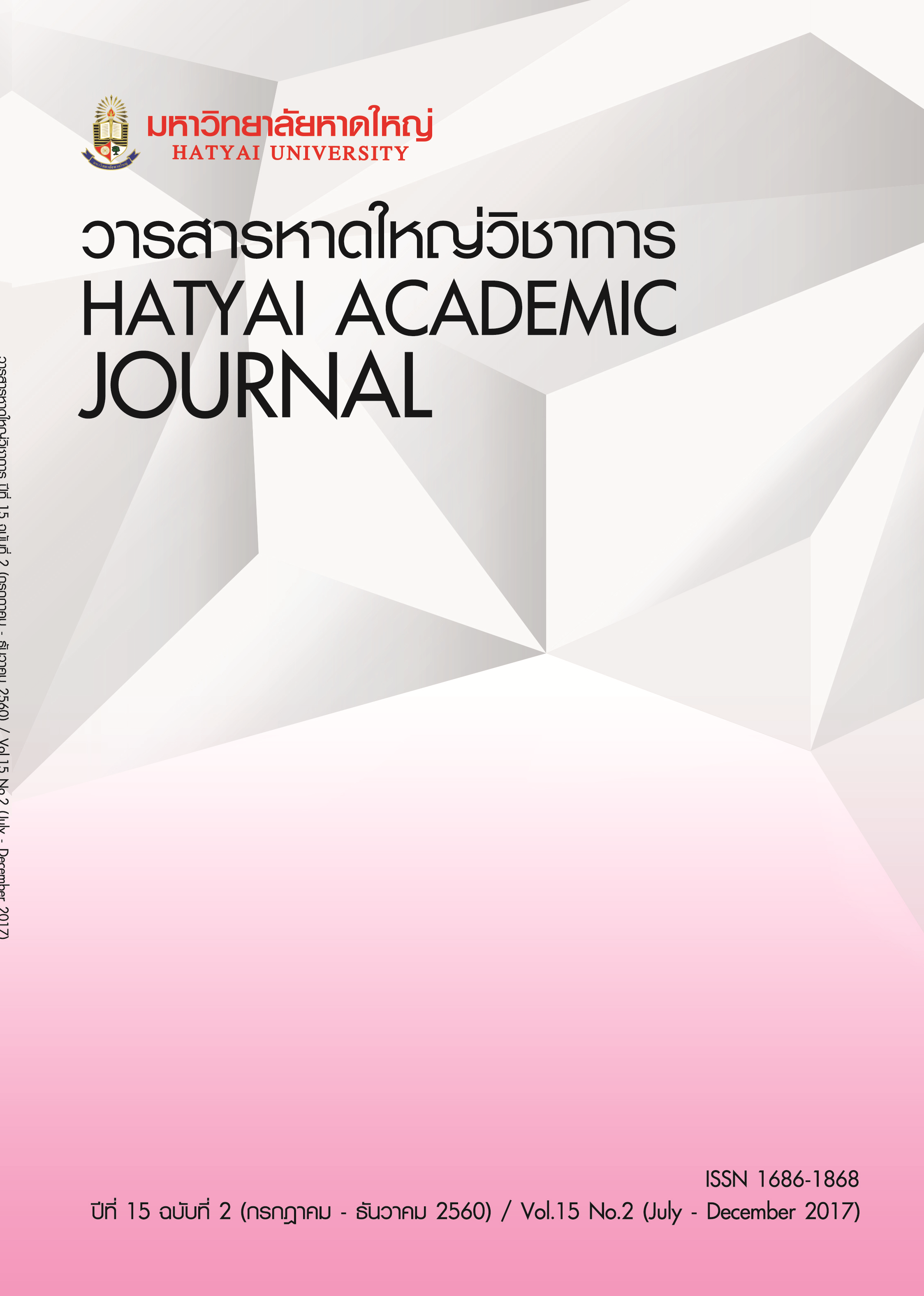กระบวนการพัฒนาพื้นที่การจัดการทรัพยากรทางทะเลและชายฝั่ง โดยการมีส่วนร่วมของชุมชนชายฝั่ง: กรณีศึกษา เขตอนุรักษ์หอยปะ ลุ่มน้ำปะเหลียน จังหวัดตรัง
Main Article Content
Abstract
This qualitative research aimed to 1) study formats, steps, and results of establishing Venus shell conservation areas in two villages located in the middle of Palian Basin: Ban Hin Cork Kwai and Ban Tung Tasae, and 2) compare the related factors affecting the success and failure of the establishment of the conservation area. Data collection was conducted by interviewing 28 participants. This qualitative research aimed to 1) study formats, steps, and results of establishing Venus shell conservation areas in two villages located in the middle of Palian Basin: Ban Hin Cork Kwai and Ban Tung Tasae, and 2) compare the related factors affecting the success and failure of the establishment of the conservation area. Data collection was conducted by interviewing 28 participants. The study found that 1) management is to protect some areas as the Venus shells conservation areas, but the areas are opened for fishing once a year. 2) There are two levels of management rules: community commitment and legal. Ban Hin Cork Kwai’s important factor of failure was because of its discontinuity of operation reflected in the policy revision of the Tambon’s new elected administrative government. While that of Ban Tung Tasae succeeded because it was started by its community members, NGOs, and concerned local governments. The factors of success are 1) high level cooperation between the government and community, 2) the community’s knowledgeable leaders who have long experience in environmental conservation, 3) the support from NGOs working as “bridging organizations”, 4) government’s acceptance of the community rights, and 5) the community’s high support given for participating in policy making. The major obstacles are 1) the concerned government agencies’ lack of law enforcement, 2) local rubber factories’ poor wastewater treatment, and 3) the reduction of salinization caused by the induced flow of freshwater into seawater.
การวิจัยเชิงคุณภาพนี้มุ่งศึกษารูปแบบ ขั้นตอน และผลของกระบวนการจัดตั้งเขตอนุรักษ์หอยปะของบ้านหินคอกควาย และบ้านทุ่งตะเซะ ซึ่งตั้งอยู่บริเวณตอนกลางลุ่มน้ำปะเหลียน จังหวัดตรัง รวมไปถึงเพื่อเปรียบเทียบปัจจัยที่เกี่ยวข้องกับความสำเร็จ และความล้มเหลวในการดำเนินงานของทั้งสองพื้นที่ เก็บข้อมูลด้วยวิธีการสัมภาษณ์ผู้เกี่ยวข้อง จำนวน 28 คน ผลการศึกษาพบว่า รูปแบบของการจัดการ คือ ต้องการปกป้องบางพื้นที่ไว้เป็นแหล่งอนุรักษ์พันธุ์หอย แต่เปิดให้ทำการประมงได้ปีละหนึ่งครั้ง ด้านกฎและกติกาในการบริหารจัดการนั้น มี 2 ระดับ คือ ระดับที่เป็นข้อตกลงร่วมของชุมชนกับระดับข้อกฎหมาย ส่วนสถานการณ์ปัจจุบันพื้นที่อนุรักษ์หอยปะ บ้านหินคอกควายนั้น ล้มเลิกไปแล้วเมื่อ พ.ศ. 2554 ส่วนบ้านทุ่งตะเซะ ประสบความสำเร็จในการบริหารจัดการเป็นอย่างยิ่ง ปัจจัยที่ทำให้บ้านหินคอกควายล้มเหลว เนื่องจากเป็นการริเริ่มของ อบต. เมื่อเปลี่ยนผู้บริหารจึงมีการเปลี่ยนแปลงนโยบาย ทำให้การดำเนินการไม่ต่อเนื่อง ในขณะที่ บ้านทุ่งตะเซะนั้น เป็นการริเริ่มโดยชุมชน ร่วมกับองค์กรพัฒนาเอกชน และหน่วยงานราชการที่เกี่ยวข้อง จึงประสบความสำเร็จในการดำเนินงาน ปัจจัยที่ทำให้เขตอนุรักษ์หอยปะบ้านทุ่งตะเซะประสบความสำเร็จ คือ 1) การมีส่วนร่วมระหว่างรัฐกับชุมชนอยู่ในระดับสูง 2) ผู้นำมีความรู้และมีประสบการณ์การทำงานด้านการอนุรักษ์มายาวนาน 3) การช่วยเหลือจากองค์กรพัฒนาเอกชนในฐานะองค์กรสะพานเชื่อม 4) รัฐยอมรับสิทธิชุมชน และ 5) เป็นการดำเนินงานที่ชุมชนมีทั้งเจตจำนงร่วมและขีดความสามารถด้านนโยบายในระดับสูง ส่วนปัญหาที่สำคัญในการดำเนินงาน ได้แก่ 1) ความหย่อนยานในการบังคับใช้กฎหมายของหน่วยงานที่เกี่ยวข้อง 2) ปัญหาน้ำเสียจากโรงงานแปรรูปยางพาราในพื้นที่ และ 3) ปัญหาจากสถานการณ์น้ำจืดท่วมชายฝั่ง ทำให้ความเค็มของน้ำเปลี่ยนแปลงจนทำให้หอยปะตายจำนวนมาก
Article Details
All published articles are evaluated by three qualified peer reviewers from various institutions through a double-blind process, where reviewers do not know the authors’ identities and authors do not know the reviewers’ identities. The content and articles in the Hatyai Academic Journal reflect the authors’ views only and are neither the opinions of the editorial board nor the responsibility of Hatyai University. The Editorial Board of the Hatyai Academic Journal allows articles to be reproduced for academic purposes, on the condition that the original source is clearly cited.

